Petting eagles and breaking rules in The Pathless, the open-world game that makes me want a PS5
We chat with developer Giant Squid for our preview of The Pathless
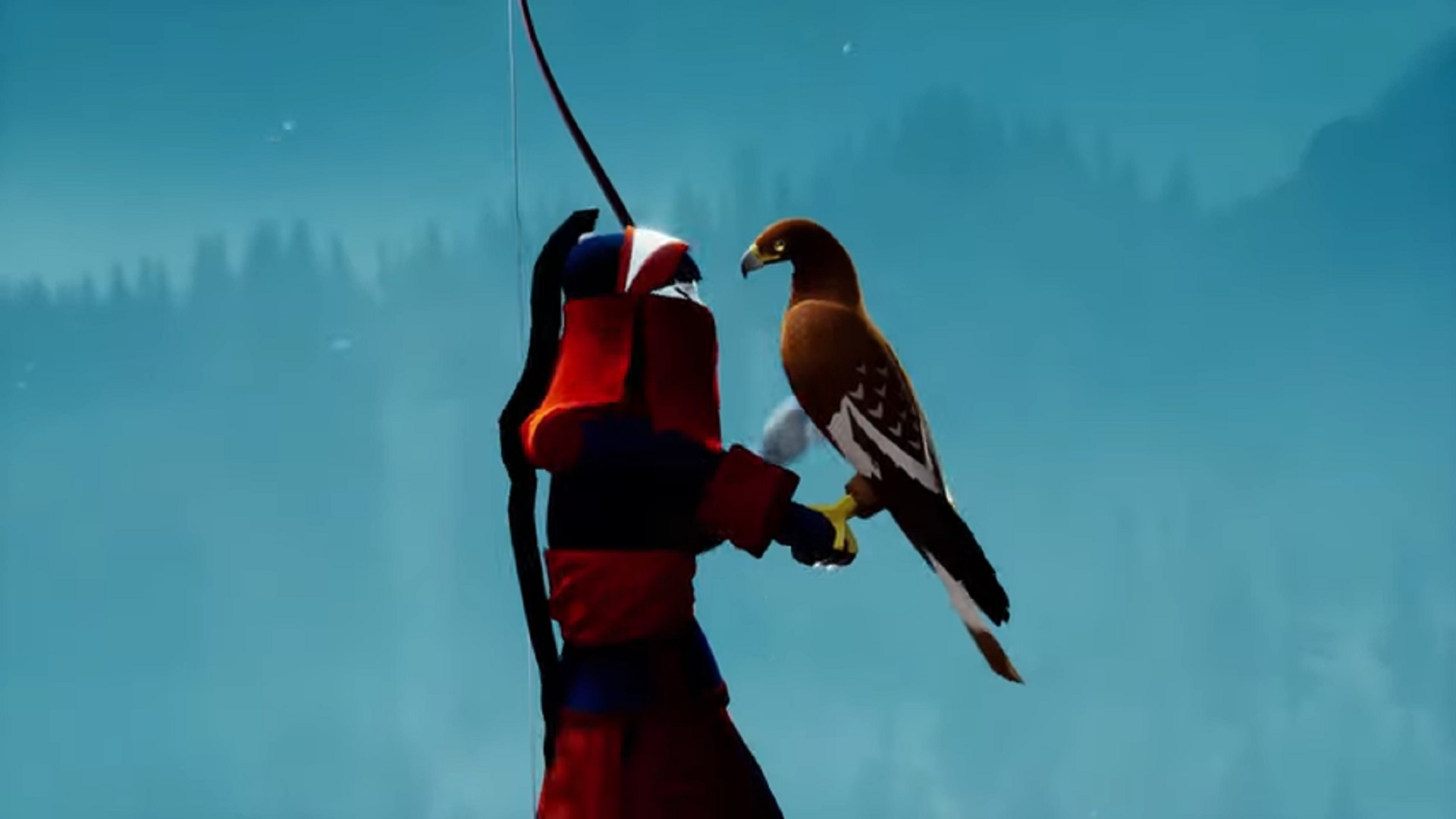
If Giant Squid's Abzu was a poem, then its new game The Pathless is an epic. It's faster, more complex, and much more ambitious. It's also more defiant. The Pathless is an open-world game with no map or game over, and it's a shooter where you don't have to aim. It delights in breaking established rules, yet it doubles down on the serenity you'd expect from the studio. And after seeing The Pathless up close and speaking with Giant Squid about its vision for the game, I count it among the biggest reasons I want a PS5.
The Pathless is coming to PS4, PS5, PC, and Apple Arcade on November 12, the same day that Sony's new console launches. It's had a few trailers and event appearances this year, but I only recently had the opportunity to watch an extensive gameplay demo played by creative director Matt Nava, who stuck around for a chat afterward.
The demo I saw was essentially a much longer version of the gameplay trailer shown at PlayStation's August State of Play. It picks up about 20 minutes into the game, right as you enter the first of the biome-like plateaus that make up the game's island. Our huntress, having just bonded with her eagle companion, sets out to return light to the world by collecting light stones and cleansing cursed spirits. This sets up the fundamental flow of the game: collect light stones by solving puzzles and clearing challenges, bring them to obelisks to weaken spirits, and then hunt the spirits down to purify them. Things are almost never that simple, of course, and The Pathless thrives on the discoveries and accidents between these main beats.
Be like water
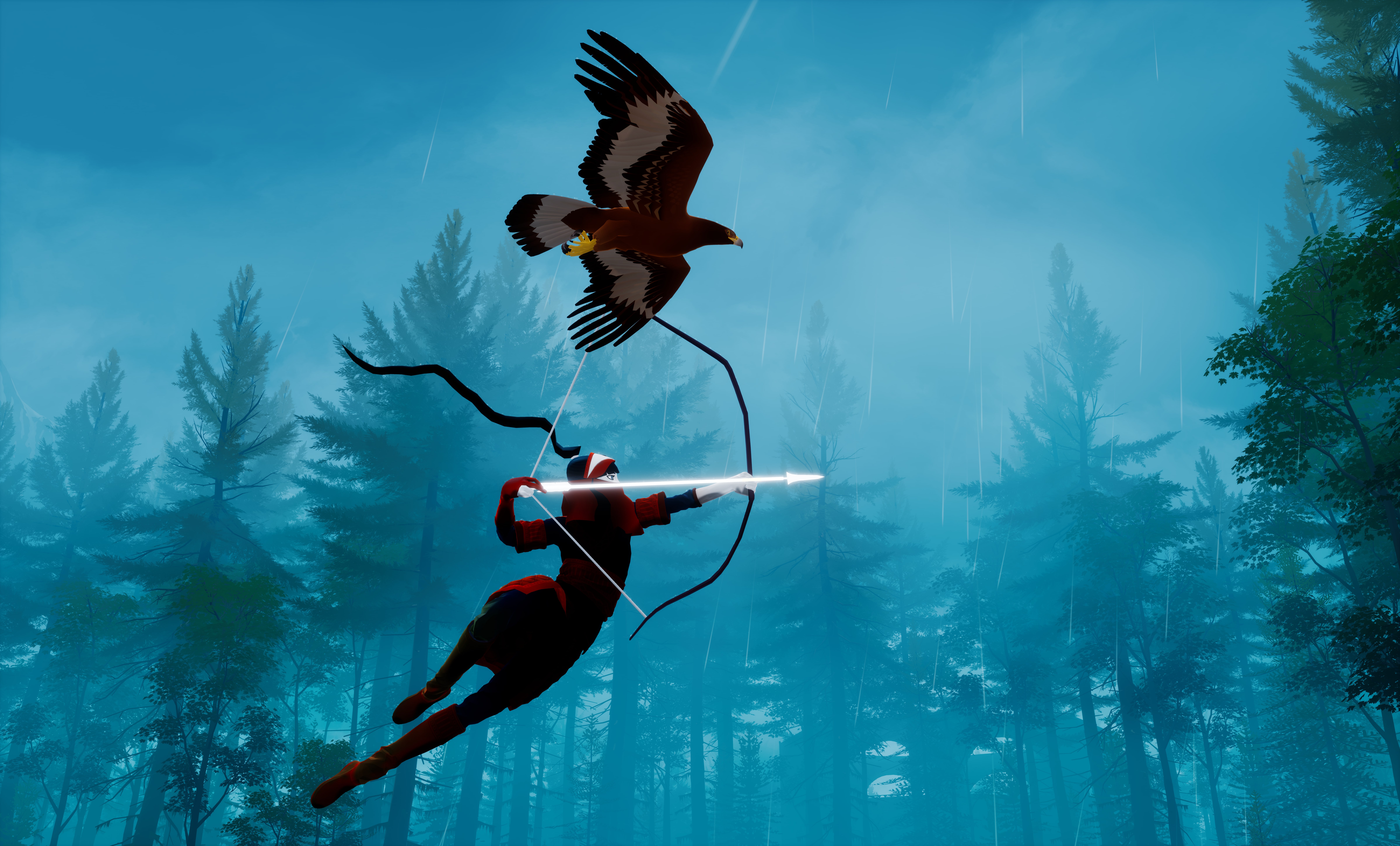
Flow really is the key word, here. The driving mechanic is momentum. As the huntress, you sprint over the plains while shooting idols to refill your energy. If you hit a gap, you can have your eagle carry you across, either by gliding gently down or flying quickly upward. The Pathless establishes these basics very quickly, and only then starts to layer in complexity.
The huntress will automatically aim her bow at the nearest idol; you never have to aim and can instead focus on the timing of your shot. This frees you up to slide or jump without losing your speed or concentration. A fully charged shot is guaranteed to hit, but you can also perform a skill shot by loosing an arrow right at a perfect half charge. This mechanic becomes even more interesting once you realize that shooting an idol gives you a quick burst of forward momentum. Oh, and you can shoot idols in the air, too, and doing so basically gives you a double-jump that doesn't rely on the eagle.
The charging mechanic leverages the PS5's DualSense controller in a cool way. Stop me if you've heard this before: the trigger on the controller gets tauter as you draw an arrow. Sony has played out this feature like a top-40 radio hit, to the point that I have to wonder if every PS5 game is now required to have a bow in it, but I think The Pathless could be the ideal acid test for this. You're going to fire a dozen arrows a minute in this game, and beyond more details and a higher frame rate (with options for 4K/30 or 1080p/60), Nava says the PS5 does make a real difference here.
"I thought it was just gonna be like cool little extra feedback. But you kind of use it to read the timing in a way, and after going back to playing on a PlayStation 4 controller, I was like 'oh wow, I didn't realize I missed that extra indicator.' I think it's gonna make the feel of the controls even more juicy in a way."
Sign up to the GamesRadar+ Newsletter
Weekly digests, tales from the communities you love, and more
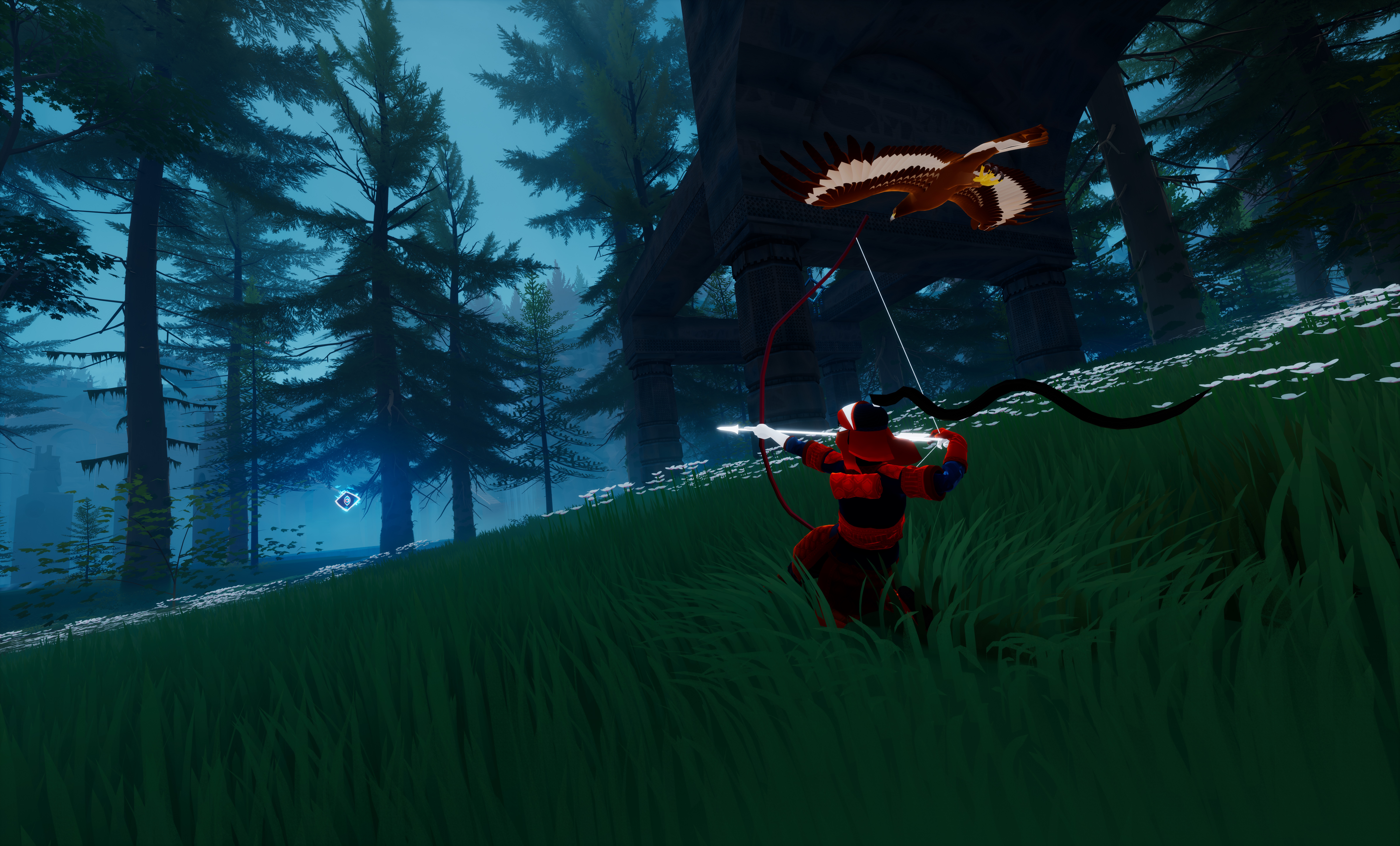
This rhythm of sprinting, sliding, jumping, shooting, and constantly propelling yourself forward is the backbone of The Pathless. It's a game built on moving as quickly and flashily as possible. The huntress moves like a river through a canyon, snaking over and around anything in her path with breathtaking flourish. As a fan of games like Mirror's Edge, Gravity Rush, Aer, and others with unconventional movement systems, this is the reason I was first attracted to the game. This is also something Giant Squid always prioritized in development.
"The focus was to have this sense of fluid motion," Nava says of the huntress. "What we realized early on is that, in a lot of games, when you have to aim you have to slow down. You can't focus on moving and shooting at the same time. A lot of games will put you in slow-mo when you have to do a sniper shot or something, literally stop you from moving. How can we solve that so you can keep going fast and shoot at the same time? Which is so rare. We realized in early prototypes that we had to make the shooting not based on lining up a reticle. The timing mechanic there was really invented to enable fluid motion through the space. A lot of the design fell out from that; all the puzzles that incorporate it and all the more advanced moves like chaining them and jumping. It was all based on that: let's make it so you can move fast through this space."
I see some of those "advanced moves" later in the demo. The most advanced move of all may be running alongside a deer long enough that it starts to sparkle and run alongside you, which is a killer app if I've ever seen one. In another section, the huntress steps on a plate, and a line of idols appear in the air, forming a path to a distant tower. To reach that tower, you have to jump and shoot all of the idols in a continuous chain to launch yourself higher and higher. Doing so nets you some crystals which improve your eagle's ability to fly, and that leads us to our feathered friend.
I would die for this eagle
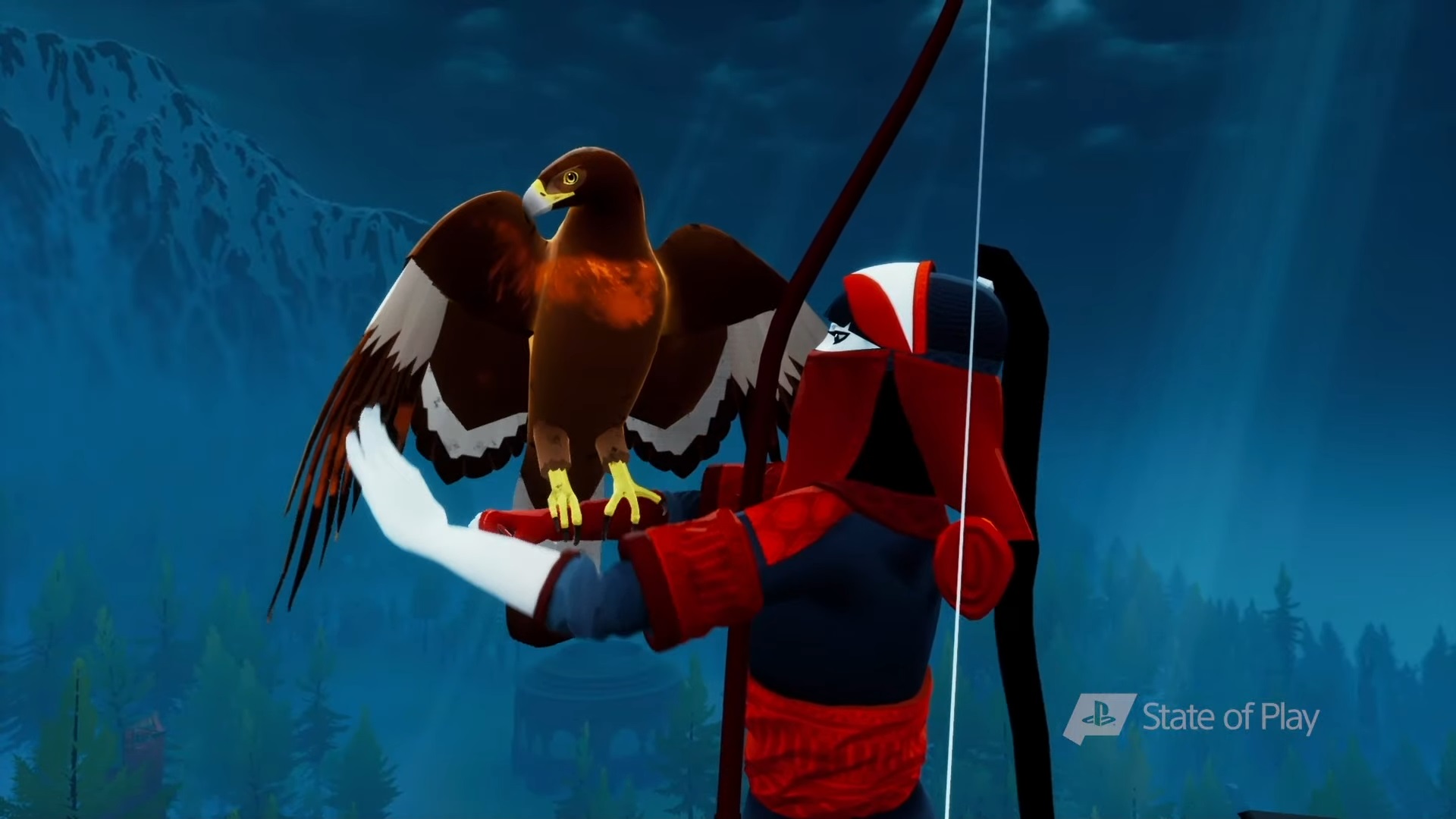
The eagle is not just some pet; it is essential to every part of the game, from cleansing spirits to scaling cliffs. You can direct it to grab and move objects for puzzles, and you'll constantly rely on the flap of its wings to get to hard-to-reach spots. If you get caught by a spirit before it's sufficiently weakened, the eagle will guide you out of the ensuing spirit storm. It will be dirtied in the process, mind you, so you'll have to pet it to clean it up and keep it happy and ready for flight. This is why, somewhere in my notes on this demo, I have "PETTING MECHANIC" written in all caps, and boy these killer apps are piling up aren't they?
As it happens, the number of times your eagle can flap its wings before landing is essentially the power system in The Pathless. Each flap lifts you higher off the ground, and you can add more consecutive flaps by collecting crystals hidden all over the place. In other words, adding more flaps will let you access new areas and secrets. Eat your heart out, Metroidvania gadgets; we've got a bird.
"You'll be able to play the game in a variety of orders, and if you explore a lot and upgrade the eagle's flaps early, you'll be able to reach other zones and sequence break a bit," Nava says. "If you just beat the bosses, it'll upgrade your flaps and you'll be able to go to the next area in that way as well. But it's really fun to have the freedom to give the player that choice to figure out their own path through the world."
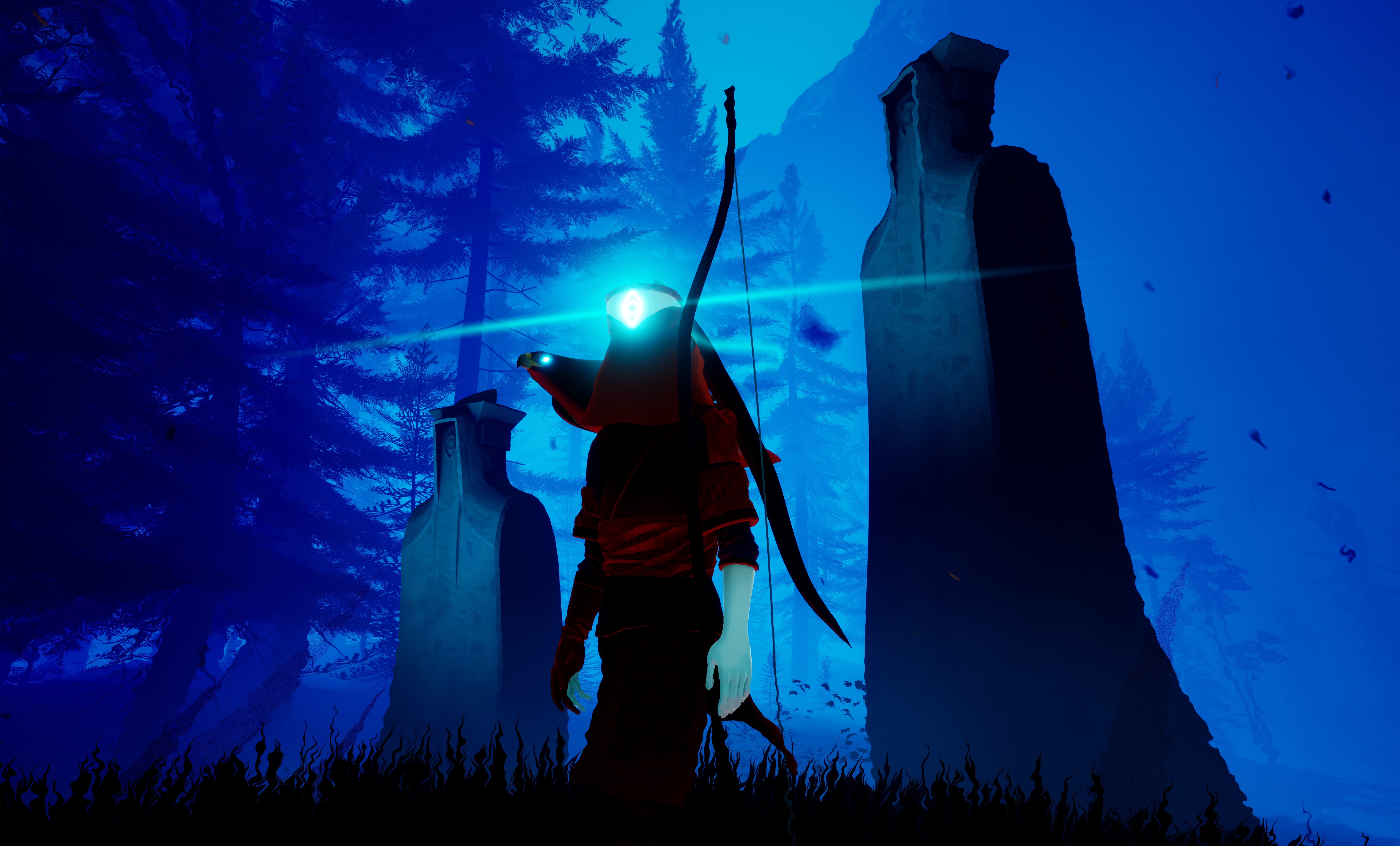
"You want something that the player cares about," he continues, discussing how to keep an open-world game interesting. "In this game, you really care about upgrading the eagle's ability to flap higher and higher. You want to let the player make progress towards that as they explore the world. So the crystals you collect were our way of doing that. They imbue every little corner with some meaning. There's always the question: is there a secret here? And if you're observant and you pay attention, you'll find little clues and hidden things. Because they're all working towards something you care about, it makes the whole process feel meaningful and fun."
The layout of the island and the placement of secrets also reflects Giant Squid's conscious decision to avoid a conventional map and any sort of game over sequence. "We wanted to make it so that information and navigation played out in the space," Nava says. "Part of the theme of the game, The Pathless, is there's no map, no defined path. You can go any way and you have to find your own path. Understanding the world in this unique way makes you think about the space in an interesting way. When you're in a forest, you can't see far because there's trees everywhere. But if you're above the trees, you can see a lot more information. You get up high, you get that information, you find a point in the distance that you want to go to, then you fly there. You land in the forest, get a little lost on the way, find some secrets, and make your way there.
"Having the movement of the character being fluid, having this immersive space, no game over, doing everything we can not to remind you you're in a game – those were the things we loved about Abzu that we wanted to do here," he adds. And what do you know: those are also the things I loved about Abzu, and The Pathless has only gone and paired them with one of the most exciting movement systems in ages. It feels like one of those games that was made for me, and it's quickly become one of my top two PS5 system sellers. A demo simply isn't enough; I need to play this pronto, and I reckon you do, too.

Austin has been a game journalist for 12 years, having freelanced for the likes of PC Gamer, Eurogamer, IGN, Sports Illustrated, and more while finishing his journalism degree. He's been with GamesRadar+ since 2019. They've yet to realize his position is a cover for his career-spanning Destiny column, and he's kept the ruse going with a lot of news and the occasional feature, all while playing as many roguelikes as possible.


